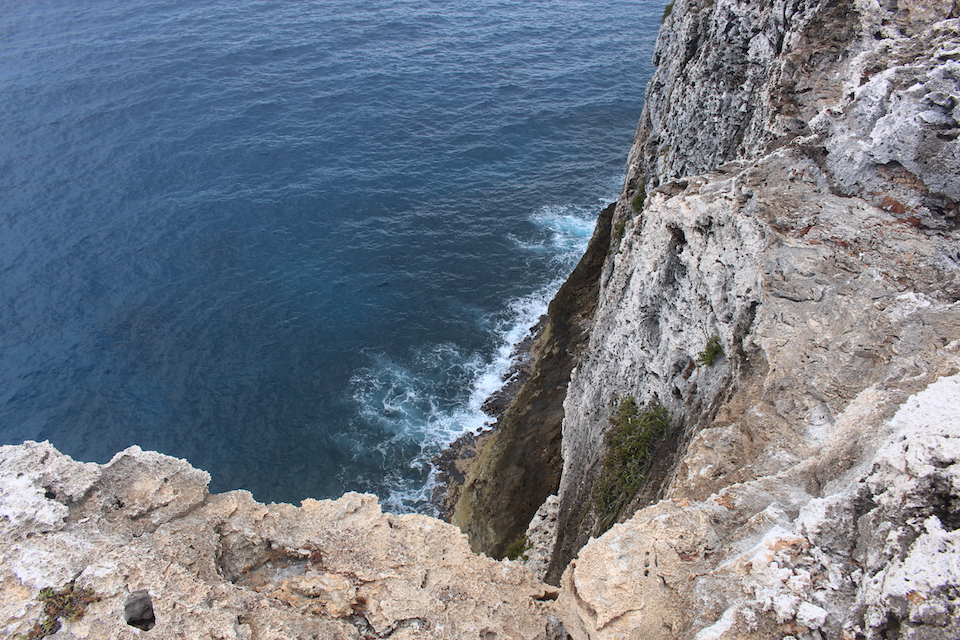A different kind of island, a different kind of people
By Alexander Britell
CAYMAN BRAC — There is a large corner of the Cayman Brac Museum dedicated to ’32.
That was the year that everything changed, when the great storm came, bringing an even greater wave, and much of Cayman Brac was washed away.
But that’s the thing about Brackers.
They are tough, and proud, and independent. And they rebuild and grow stronger. And they did.
The survivors of the storm of ’32 pulled together to make the island new again.
That’s what Brackers do.
The way you hear them, they seem to know that those on Grand Cayman think of them with a kind of reverence, as if they are as much legend as flesh and blood.
Because this little island 90 miles from Grand Cayman is as much a country as an island, a nation within a territory.
It is not the Cayman Islands. It is The Brac.
It’s s place still untouched by many things.
It’s the kind of place where you can make the kind of sweeping generalization about the way of a people, about their kindness, you can’t really make anywhere else anymore.
What makes it special?
“Honestly, the people, the genuine friendliness,” says Keino Daley, a tourism official who is one of a group of Brackers who provide free guided tours to the island for anyone who wants one.
“There’s a few grumps,” Keino cautions.
Keino drives us around the island In a light drizzle.
We see the Water Fountain, one of the places where they make their own water on the island, and later, a beautiful new football field. And then the Barracuda bar.
Then we check out the waterfront La Esperanza, a colorful oceanfront bar that gets very lively when the sun goes down.
There are a few bars like this on Cayman Brac, a few restaurants, a few little beaches.
Today, just under 2,000 people live here, subsisting largely on tourism, a product mainly frequented by divers, who come here for some of the best diving anywhere on earth, staying at the popular Brac Reef Resort, one that itself survived Hurricane Paloma in 2008, and is now building a new infinity pool and other additions.
But that’s not the only reason to come here.
The reason to come here is precisely because few do. Because you get your own island for a day or a week. Because this is a mysterious, wonderful island, one that feels small and mythic at once.
And because of the wonder of the bluff, the 12-mile-long, 150-foot-high wall of rock that is the natural fortress of the place. This gives Cayman Brac its full name, Brac being a Gaelic word for bluff.
It is the first thing Columbus saw when he came here, blown off course in 1503. It is a foreign landscape that adds to the ethereal quality of the island.
It’s from here, at the far end of the Bluff, that we drive to the Pioneer Bakery, the one that is, perhaps conveniently, located next to the Police Station. (Although cinnamon rolls, not donuts, are the preferred fare here).
I opt for a local beef patty — a light choice before we head to lunch at Star Island, a wonderful little eatery with great fish and a diverse menu that includes everything from cornmeal porridge to Chow Mein.
We then drive on a coastal road, passing by a little boat launch called, fittingly, the Panama Canal, and then looking out to a buoy that marks the location of Atlantis.
It’s here that an artist called Ronald “Foots” Kynes has created a massive underwater sculpture collection known as the Lost City of Atlantis. The park at Radar Reef includes pillars, pathways, columns and, most importantly, “Elders,” each created using the mold of a local Bracker’s face.
It’s these little places, these stories and legends on the Brac, that are a big part of the draw.
And then there is the other reason, the primary reason, to come here —the Brackers.
On the drive back to the airport, Keino slows down the car.
“We just missed the fight,” he says. “Abbott and Costello.”
Who?
“Two cows. They’re brothers.”
Because here on the Brac, even the cows have their own legends.
Because this is someplace else entirely.
“If you from Cayman you from Cayman,” he says. “We from the Brac.”


















